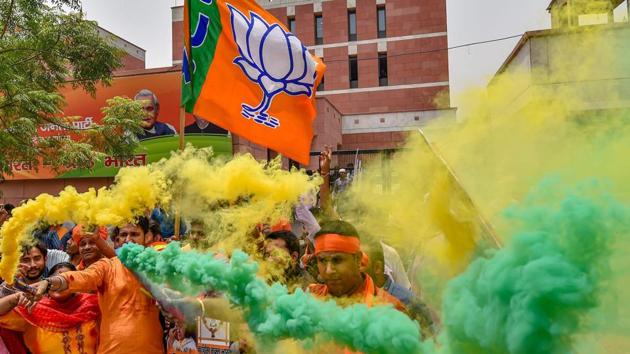Polarisation helped BJP in coastal Karnataka
This coastal region in Karnataka, comprising 19 constituencies spread across three districts, has for long been considered a laboratory for Hindutva politics.
In the absence of an overarching narrative in the Karnataka assembly elections , the Bharatiya Janata Party (BJP) employed a multi-pronged strategy with region-specific issues.

The strategy that it adopted in coastal Karnataka was obviously communal polarisation. This region, comprising 19 constituencies spread across three districts, has for long been considered a laboratory for Hindutva politics. Although it tried to use the communal card in other regions of the state as well, it was in this most economically advanced region that the BJP relied entirely on a nationalistic-communal plank.
The region witnessed a series of murders of both Hindus and Muslims over the past five years. The BJP raised these murders, alleging that 24 Hindu activists had been murdered by the Muslim fanatics and the state government was trying to protect the killers. In spite of state government’s repeated clarifications that most of these murders had no communal angle and that the accused in all these cases had been arrested, the BJP did not relent. It continued to push the state-sponsored “Hindu massacre” narrative. Prime Minister Narendra Modi, at his election rallies, described this as “ease of doing murder”.
The narrative, which was initially confined to the coastal district, was echoed in other parts of the state with two other developments. First, when the Siddaramaiah government decided to commemorate the birth anniversary of Tipu Sultan, the 18th ruler of the kingdom of Mysore, the BJP launched a statewide agitation against the “celebration of a religious bigot”.
The Congress government’s defence that Tipu was a great patriot and the first Indian ruler to offer stiff resistance to the British was drowned in the high-decibel BJP campaign. This also figured frequently in Modi’s speeches during the electioneering. He would reel out names of a dozen Hindu freedom fighters whose birth anniversaries are not celebrated by the state. He would then ask a charged audience to take note of how the Congress government appeased Muslims by celebrating a ‘bigot” and neglecting genuine Hindu freedom fighters. In rallies after rallies, large parts of Modi’s Hindi speeches flew above the head of the audience, but these references struck a chord.
The second and the most important factor that helped the BJP use strategy beyond coastal Karnataka was the state government’s support to the demand for recognition of the state’s powerful Lingayat community as a separate religion. The Congress thought that it would get it the support of the Lingayats, who were known to have been solidly behind the BJP after the disintegration of the undivided Janata Dal. However, the BJP cleverly used this in its communal narrative.
The BJP’s argument that the Congress was driving a wedge between the Hindus by backing the Lingayat demand was easier for the people to understand when compared to nuanced historical and philosophical justifications for separation of the Lingayats from the Hindu fold.
Finally, a slew of welfare measures that the Siddaramaiah government launched for the Muslim community also helped the BJP in its religion-centred campaign.
The government’s defence that these programmes in no way amounted to special favours for the Muslims and that they were funded by the money allocated in the budget for the department of minority development paled, before the powerful appeasement argument advanced by the BJP.
The strategy has obviously worked. Of the 19 seats in the coastal region, the BJP won all but three seats.
In 2013, the BJP won just three seats in the region. The strategy also seems to have worked in the Lingayat-dominant Bombay Karnataka and Hyderabad Karnataka regions, where the Congress lost heavily.
Two subtle elements of the polarisation strategy in Karnataka are to be noted. First, the narrative used by the BJP was no longer confined to arguments of minority appeasement and pseudo-secular tendencies .
Here, the BJP painted Siddaramaiah and the Congress as “enemies of the Hindus”. The message was simple and straight: the chief minister not only protected Muslim fanatics to preserve his vote banks, the Congress was breaking Hindu unity by supporting the demand for recognition of the Lingayats as a separate religious community.
Second, while the communal argument was used selectively and subtly in the open campaign, the campaign carried out through innumerable digital platforms and social media groups centered on only one message -- a clarion call to reject the “enemies of the Hindus”.
(The author teaches in Azim Premji University)






